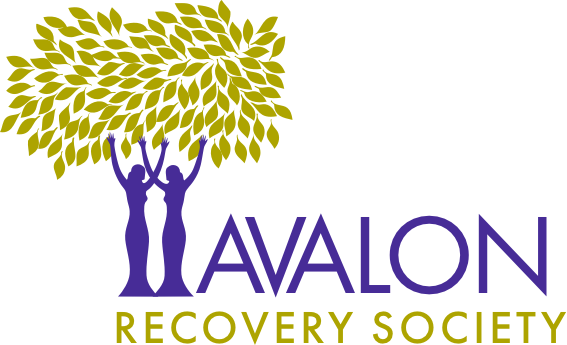
Today is World Health Day and to honour it, we wanted to bring you a blog about the role of good health in recovery. And what better time to focus on your overall well-being than spring! Spring is a time for growth and renewal. After your body experiences substance abuse, it likely has some damage and health deficiencies, so it’s important to have a fresh outlook on what you could be doing to improve your overall health. Investing in your own physical and mental health should therefore be an integral part of your recovery plan. It will ultimately help you attain long-term sobriety and live a happy and fulfilled life.
Today, we’re discussing the benefits of restoring your physical health, different ways to be active, and healthy habits and lifestyle changes. Note: If you’re in the early stages of your recovery, you may need to exercise caution around over-exerting yourself physically or straining the body while it is still in the process of detoxifying. We strongly recommend speaking with your doctor to develop a plan that’s right for you.
Benefits of improving physical health
Helps control urges and prevent relapse
Exercise is linked to higher levels of dopamine in the brain. Dopamine is a neurotransmitter that’s associated with pleasure and reward. Heightened amounts of dopamine often make people feel happier and more carefree. By exercising regularly, dopamine levels increase, and the pleasure centre of the body is satisfied – leading you to experience fewer cravings and less desire to use. Moreover, there is a hormone called norepinephrine that is released when you experience stress, and high levels of it are associated with relapse. Exercise decreases the levels of norepinephrine in the body, which therefore lowers the risk of relapsing in recovery. By investing in your physical fitness, you may also start to build a healthier environment and lifestyle. This can further prevent relapse by providing alternative activities to using and introducing you to new friends and places that are less triggering.
Minimizes stress and anxiety
In the vast realm of stress relief activities and coping mechanisms, exercise is one of the healthiest and most rewarding. Even just a few minutes of physical movement will release those mood-boosting endorphins that cause you to feel happy and release pent up frustrations. It shifts your attention from stressors in your life – towards new healthy goals. And if stress and anxiety are alleviated through exercise, it prevents addicts from turning back to substances as a means to escape or self-medicate to handle these emotions.
Increases self-esteem and self-worth
Consistent exercise can lead to visible changes and markers of progress. This physical transformation can drastically improve an individual’s self-confidence and perception of themselves. But beyond this, showing yourself that you can stay committed to practices that you know are good for your physical and mental health is powerful and motivating. It’s a reminder that you are in control of your life, your decision-making and can prioritize yourself in a healthy way.
Provides structure and discipline
Physical fitness is a new arena for goal setting. Whether it’s increasing your number of repetitions in the gym, lengthening your walk by a few minutes every day, or learning a more advanced yoga pose, you have something healthy to work towards. Exercise presents these achievable landmarks that create a sense of purpose, success, and motivation. Incorporating physical activities into your daily routine can also help create structure, foster discipline, and show commitment to a long-term goal. This mental toughness can be applied to one’s relationship with sobriety as well.
Builds community
Physical fitness can bring with it the opportunity to expand your social circle and support system through a new shared interest and pastime. Joining a fitness group or participating in an organized class is a great way to meet new people with whom you already have something in common. It can also help to have an accountability buddy who motivates you to keep pushing toward your goals. You can build community and deepen relationships through healthy activities like going for a long walk with a friend or family member, enduring a hard fitness class together, or preparing a nutritional meal to share.
Improves overall health
Physical activity provides numerous health benefits for anyone, but particularly for those in recovery who may have experienced extended sedentary periods while using. Simply going for a walk can improve your cardiovascular health and flexibility. Moreover, regular exercise can help lower your blood pressure, improve your circulation, and reduce your risk of diabetes and other chronic diseases.
Ways to stay active
- Walking or hiking has the dual benefits of actively moving your body and providing an opportunity to reap the benefits of being in nature. The fresh air and an immersion in natural spaces and the beauty that come with spring can be a therapeutic practice in itself, while also providing vitamin D through sunlight. Long walks or hikes can also provide time to be contemplative, introspective, and gain perspective.
- Jogging is a step up in intensity from a walk or easy hike and improves your cardiovascular fitness and heart health, regulates weight, and strengthens muscles. Jogging outside can also provide the benefits of being in nature, or you can run inside on a treadmill (try watching a video or listening to a podcast as you go). Similarly, you can try going for a bike ride outdoors, on a stationary bike, or by taking a group spin class.
- Swimming is another great aerobic exercise, particularly for those who have any residual physical damage or pain from their substance abuse. As opposed to running or walking, swimming is much easier on your joints and muscles because you are buoyant in the water. Swimming laps is a great healthy exercise, as is taking a water aerobics class. Both have the flexibility to accommodate different levels of experience and skill. And water itself, much like nature, can bring its own peacefulness and tranquility that can help ease stress.
- Dancing can be an overlooked form of exercise, but it actively engages many muscles throughout the body, encourages blood flow, and gets the heart pumping. For someone who doesn’t feel drawn to high-intensity workouts or going to the gym, this can be a really enjoyable and low-pressure way to incorporate physical movement into your day-to-day life. It can be more structured in a dance class or free in the comfort of your own home. The combination of dance and uplifting music can really help lower stress levels and improve your mood, motivation, and energy.
- Yoga is a great practice for both your mind and body. It can improve your flexibility, deepen your stretches, and bring awareness to how your body feels. It also encourages heightened presence in the moment, concentration, focus, and letting go of any lingering or repetitive thought patterns. Yoga helps relieve stress, anxiety, and frustration and channels that energy into calmness and reflection. This mental strength may come in handy when experiencing temptations or urges to use. If you have a sense of inner peace, you are less likely to look for an escape or to self-medicate with harmful substances or risky behaviours. You can react to situations with more self-control and sense. In a similar vein, tai chi is a great mind and body exercise, or you can meditate on its own to delve deeper into the mental space.
- Other activities: playing sports, gardening, power–walking, skiing or snowboarding, weightlifting, Pilates, Zumba, boxing
Habits and lifestyle changes
- Seek out opportunities to be active. This can look like: taking the stairs instead of the elevator, going for a short walk on your lunch break, biking to work instead of driving, or taking your dog out for an extra walk.
- Develop a healthy balanced diet. This will vary depending on your body and its nutritional needs, so once again this may be something to consult with a healthcare professional about. Generally, a balanced diet includes a variety of fruits and vegetables, lean proteins like poultry or fish, and whole grains – and of course, the occasional indulgence in your favourite treat! The goal of developing a healthy and balanced diet is to replenish your body with the vitamins and nutrients that it may have been deprived of through substance abuse.
- Combine physical health with mental wellness. A holistic approach to health and sobriety is key for long-term success and happiness. In this blog, we speak mostly about physical fitness, but it’s the combination with mental wellness that allows someone to live a fulfilled and whole life in recovery. Mental wellness means listening and checking in with yourself, being present and aware of your thoughts, having time alone, and recognizing when you need help. For some people, this is found through journaling or prayer, but it could be any self-care practice that brings you mental health and happiness.
Good health plays a unique role in recovery. Sure, fitness is important for people in all walks of life, but for those whose bodies have endured the physical effects of drug abuse, actively working towards achieving and maintaining good physical health is an important and sustainable way to heal previous damage. Exercise does wonders for your well-being, mental state, and sobriety. Make physical activity a part of your daily routine and take time to find methods that you enjoy and make you feel happy and motivated. Physical and mental resiliency are great tools to manage cravings, stressors, and triggers along your recovery journey. You got this!
